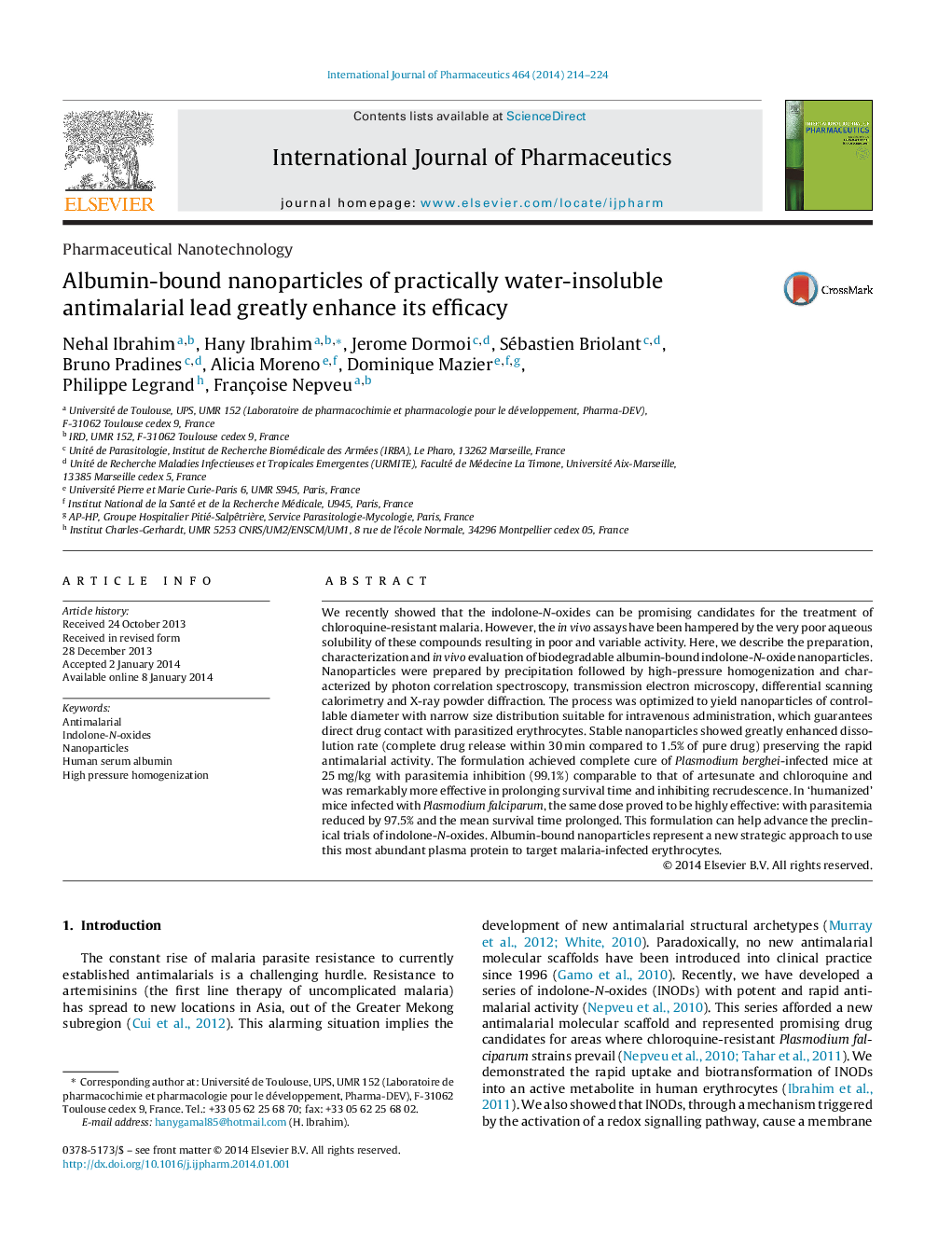| کد مقاله | کد نشریه | سال انتشار | مقاله انگلیسی | نسخه تمام متن |
|---|---|---|---|---|
| 2501883 | 1557363 | 2014 | 11 صفحه PDF | دانلود رایگان |
We recently showed that the indolone-N-oxides can be promising candidates for the treatment of chloroquine-resistant malaria. However, the in vivo assays have been hampered by the very poor aqueous solubility of these compounds resulting in poor and variable activity. Here, we describe the preparation, characterization and in vivo evaluation of biodegradable albumin-bound indolone-N-oxide nanoparticles. Nanoparticles were prepared by precipitation followed by high-pressure homogenization and characterized by photon correlation spectroscopy, transmission electron microscopy, differential scanning calorimetry and X-ray powder diffraction. The process was optimized to yield nanoparticles of controllable diameter with narrow size distribution suitable for intravenous administration, which guarantees direct drug contact with parasitized erythrocytes. Stable nanoparticles showed greatly enhanced dissolution rate (complete drug release within 30 min compared to 1.5% of pure drug) preserving the rapid antimalarial activity. The formulation achieved complete cure of Plasmodium berghei-infected mice at 25 mg/kg with parasitemia inhibition (99.1%) comparable to that of artesunate and chloroquine and was remarkably more effective in prolonging survival time and inhibiting recrudescence. In ‘humanized’ mice infected with Plasmodium falciparum, the same dose proved to be highly effective: with parasitemia reduced by 97.5% and the mean survival time prolonged. This formulation can help advance the preclinical trials of indolone-N-oxides. Albumin-bound nanoparticles represent a new strategic approach to use this most abundant plasma protein to target malaria-infected erythrocytes.
Figure optionsDownload high-quality image (326 K)Download as PowerPoint slide
Journal: International Journal of Pharmaceutics - Volume 464, Issues 1–2, 10 April 2014, Pages 214–224
